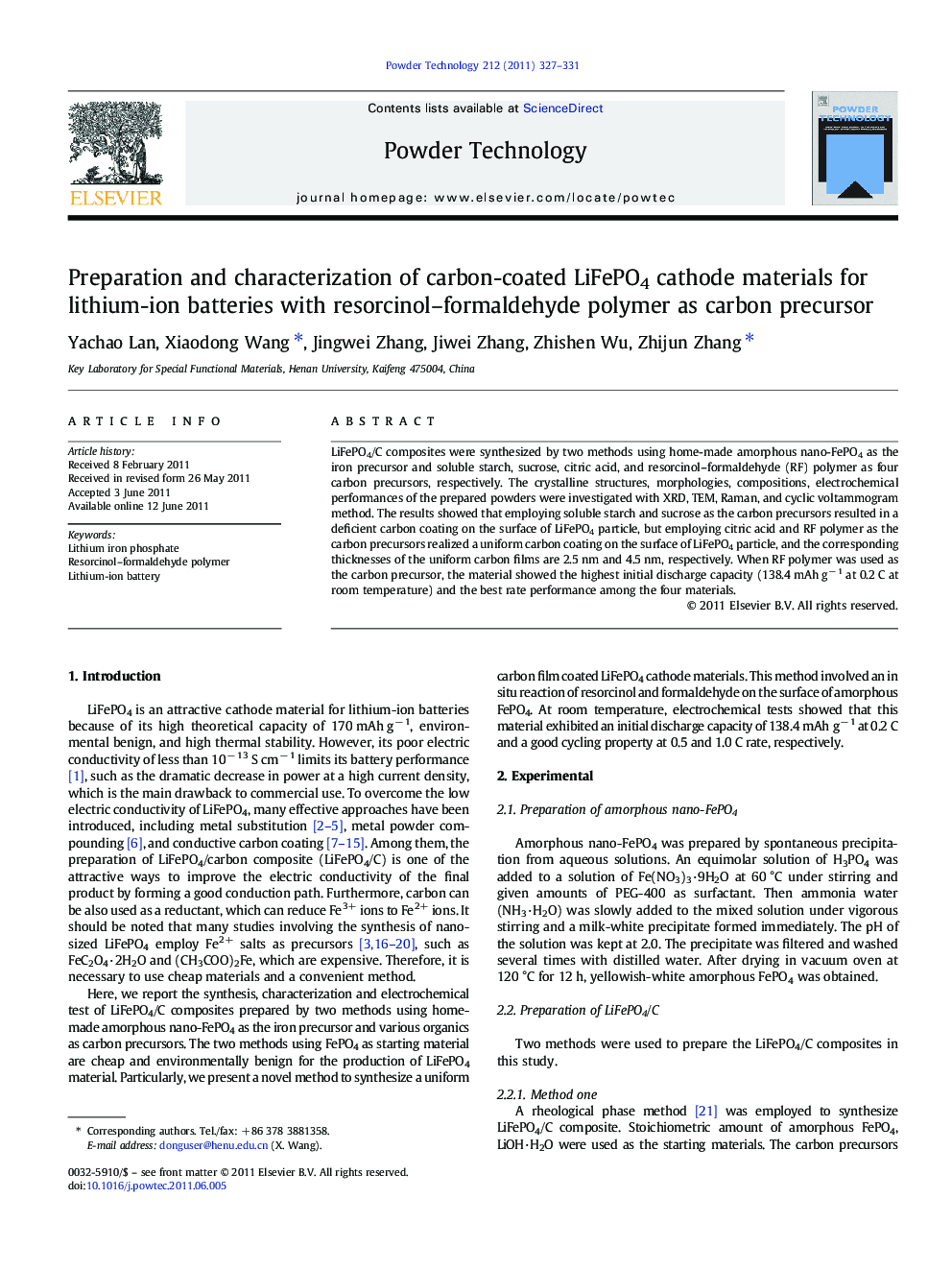| Article ID | Journal | Published Year | Pages | File Type |
|---|---|---|---|---|
| 237529 | Powder Technology | 2011 | 5 Pages |
LiFePO4/C composites were synthesized by two methods using home-made amorphous nano-FePO4 as the iron precursor and soluble starch, sucrose, citric acid, and resorcinol–formaldehyde (RF) polymer as four carbon precursors, respectively. The crystalline structures, morphologies, compositions, electrochemical performances of the prepared powders were investigated with XRD, TEM, Raman, and cyclic voltammogram method. The results showed that employing soluble starch and sucrose as the carbon precursors resulted in a deficient carbon coating on the surface of LiFePO4 particle, but employing citric acid and RF polymer as the carbon precursors realized a uniform carbon coating on the surface of LiFePO4 particle, and the corresponding thicknesses of the uniform carbon films are 2.5 nm and 4.5 nm, respectively. When RF polymer was used as the carbon precursor, the material showed the highest initial discharge capacity (138.4 mAh g− 1 at 0.2 C at room temperature) and the best rate performance among the four materials.
Graphical abstractLiFePO4/carbon composite powders with an average particle size of about 150 nm have been prepared with a resorcinol–formaldehyde (RF) polymer as a carbon precursor. HRTEM image reveals that the prepared LiFePO4 particle is well crystallized and it is coated with a fine layer of carbon, whose thickness is about 4.5 nm.Figure optionsDownload full-size imageDownload as PowerPoint slideHighlights► LiFePO4/C composites were synthesized with various organics as carbon precursors. ► Employing RF polymer as the carbon precursor realized a uniform carbon coating. ► RF-polymer-derived-carbon coated LiFePO4 showed better initial discharge capacity. ► The cyclic voltammogram results are consistent with the samples' rate performance.
